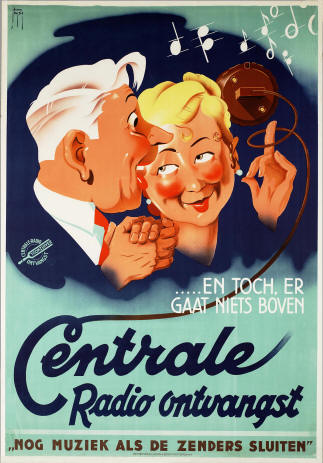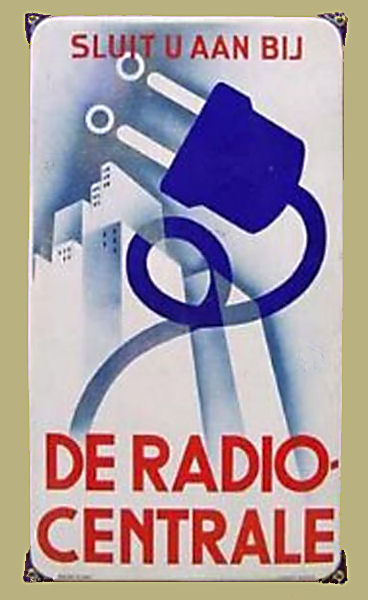|
Selector switch |
| Made of dark brown
Bakelite with crème coloured plastic. The crème coloured
knob can be used for volume control in steps. The Nedap
(N.V. Nederlandse Apparatenfabriek)
logo is printed on the switch; a PTT logo is visible on
the enclosure. The switch was made in the 1950s. It was
sold in 2022. |
 |
| Nedap was founded
in 1929 and is still active in technology worldwide. |
On the 14th of April, 1924 the first
Dutch radio wire broadcasting organisation, Eerste Nederlandsche Radio Centrale
(ENRC) was founded. Five subscribers were connected. The
first programme broadcasted on the 21st of April, 1924
(Easter) was the Matthäus Passion by J.S. Bach; a direct
transmission coming from the St. Bavo Church in Haarlem.
The organisation was a big success. In 1929 ENRC had 3500
subscribers, and distribution points in the Zaanstreek,
and the cities of Amsterdam, Heiloo, Uitgeest, Alkmaar and
Deventer. |
| In
the thirties popularity raised rapidly. Transmissions of
both Dutch radio
stations were distributed, as well as a dedicated wire
broadcast program. Shortly before the outbreak of WWII,
mobilisation messages were broadcast. |
|

|
Many subscribers turned away at the beginning of the
war, as they didn't have any faith in a system that was
completely in the hands of the Germans. In the second
half of 1942, subscribers started using the system again
as gradually the curfews were introduced and radios were
being commandeered, starting in May 1943. |
|
After the war the Dutch PTT invested a lot of money in
the system, but the introduction of FM radio and
increasing prosperity lead to a decrease in the number
of connections. A last attempt to save wire broadcasting
was a trail in The Hague. |
|
Distribution of television programs using the existing
infrastructure failed because of
technical problems and the restriction of four programmes only.
In 1964
the government decided to gradually abolish wire
broadcasting. The end came on January 31st, 1975, as the
last network in Delft fell into disuse. |
|